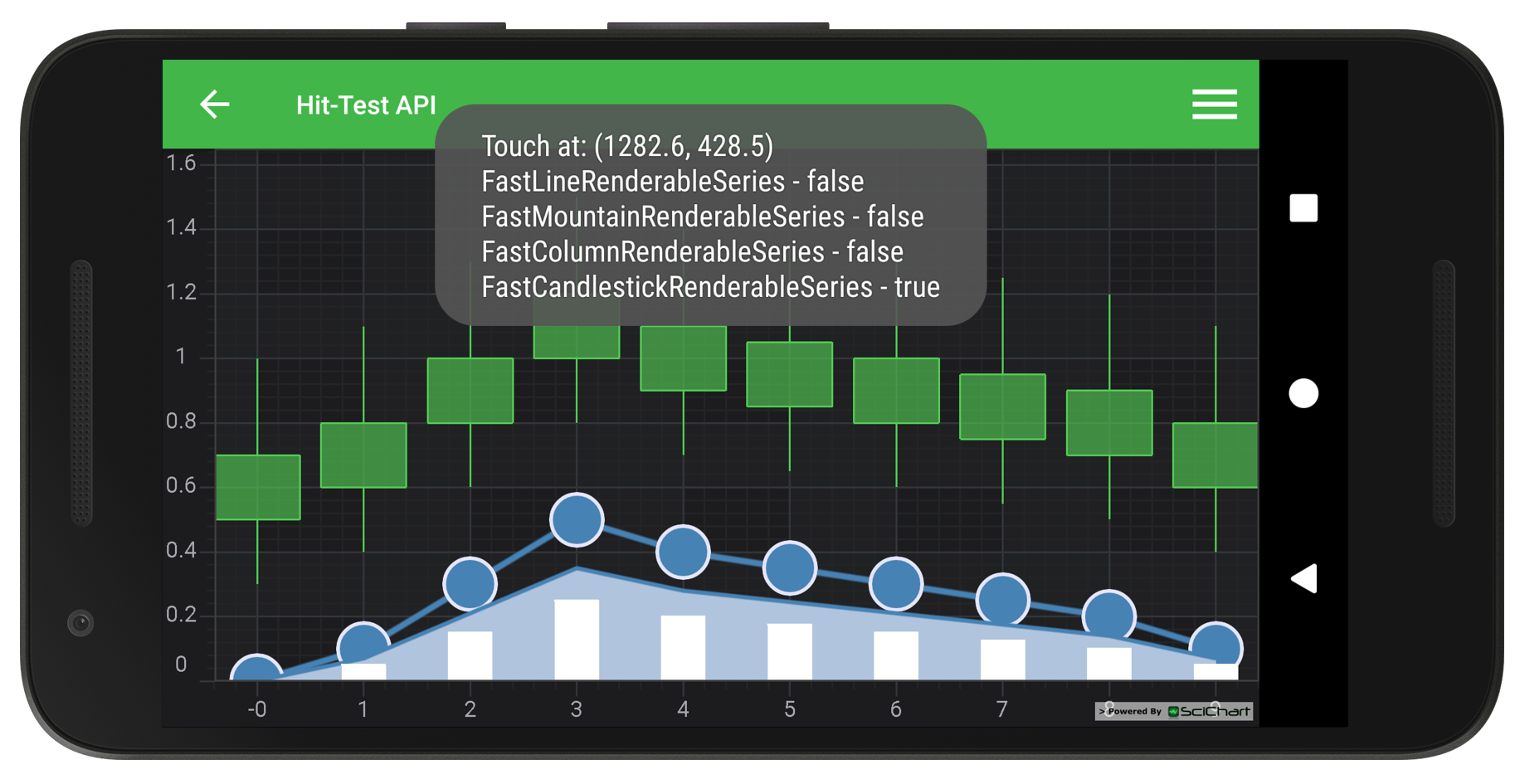Android Chart - Examples
SciChart Android ships with ~90 Android Chart Examples which you can browse, play with, view the source-code and even export each SciChart Android Chart Example to a stand-alone Android Studio project. All of this is possible with the new and improved SciChart Android Examples Suite, which ships as part of our Android Charts SDK.
Demonstrates the Hit Test API, which can be used to get feedback about taps on data-points or lines and enable selection, or showing of context menus.
Example Usage
Tap anywhere on the chart to call BaseRenderableSeries.hitTest(). The method accepts coordinates of a touch point and returns the nearest data-point, plus its location in X,Y coordinate space.
The full source code for the Android Chart Hit-Test API example is included below (Scroll down!).
Did you know you can also view the source code from one of the following sources as well?
- Clone the SciChart.Android.Examples from Github.
- Or, view source and export each example to an Android Studio project from the Java version of the SciChart Android Examples app.
- Also the SciChart Android Trial contains the full source for the examples (link below).


